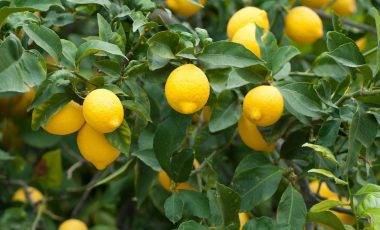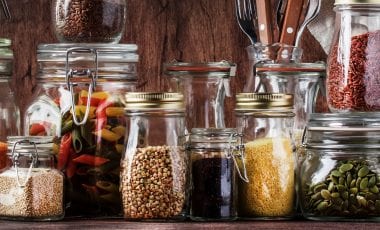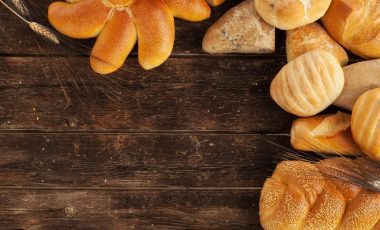As the temperatures drop, that need for a nice hot cup of tea on the sofa rises. But does this have to mean the same old tea in a bag?

Whether fruity, herbal or even black tea: Most types of tea can be prepared easily. You just need a bit of creativity and a few ingredients; some of them might already be in your own garden. The result: a healthy, tasty and soothing hot beverage tailor-made just to your taste. Read on to find out about which fruits, herbs and other ingredients are perfectly suited for your DIY tea project.
There is an abundance of types of tea, which can be enjoyed in a multitude of ways – more so than any other drink. When talking about tea, we specifically mean a drink prepared with water made from parts of the tea plant. Fruit and herbal teas are officially “tea-like” drinks, or infusions, but are also commonly referred to as “tea”. The beloved hot drink already gained a foothold and was drunk and traded throughout Europe by the 17th century. It is believed that tea has its origins in China where it has been enjoyed for over 5,00 years as a health-giving beverage.
Even today people drink tea for its healthy properties. For example, some varieties, such as chamomile, anise or fennel, relieve abdominal discomfort, and others, such as sage, soothe the first signs of a cold. But even if you have no complaints, a nice hot cuppa is always something to be cherished. That’s because: This versatile drink is relaxing, can help to improve your mood, and warms you up from the inside. And if you are tired of the same old peppermint tea bags in your cupboard, read on to find out which fruits and herbs you should have on hand the next time you put the kettle on.
Fruity and herbal tea from your own garden

The classic infusion: Herbal tea. You can find the right herbs in your own garden or even plant them on your windowsill. Especially popular are herbs such as chamomile, sage, mint, lemon balm, lavender, dandelion or nettle. But various fruits are also amazingly suited for creating your own teas. Have a look at what you already have in your Liebherr fridge. For example, oranges, blueberries, apples, pears or strawberries can be added to your tea for a welcome change. Steep the fresh ingredients – such as mint or lemon – directly in the hot water, or you can dry them first and use them later.
Dehydration and drying devices can also be used to fully dry out your tea blends so that they don’t begin to develop mould. If you are only drying a small amount every now and again, this can be done in a dark, dry and cool room or even in the oven. For the latter, pre-heat the oven to about 50 °C. The amount of time in the oven depends on what you are drying – different items dry at various rates. Herbs and blossoms are usually ready after half an hour, whereas fruits can take up to several hours. It is important to keep the oven door open a bit to let the moisture out. You can tell when the items are ready for the infusion once the herbs and flower blossoms fall apart a bit when touched or the fruits are hard. Even if it is tempting in summer, don’t dry your ingredients in direct sunlight. The reason: valuable properties are lost, and the herbs and fruits can actually rot. For those who do not have the chance to grow their own, dried herbs can be found at many organic markets and speciality shops.
It’s all about the right blend!

In case you find the plethora of combinations that can go into the perfect blend of tea overwhelming, we have the perfect guide to help you out. When buying a perfume, you probably have heard people refer to base, top and heart notes. This principle can also apply to blending teas. About half the tea is comprised of the base note and is the decisive factor in the chief virtue of the tea. For example, camomile is calming and sage has an antibacterial effect. The heart note makes up about 30% of the tea and determines the character of the blend. Herbs and flower blossoms are predominantly used for this. The remaining 20% of the blend is the top note which mainly provides the pleasant bouquet among a few other characteristics. Here fruits such as lemon or berries can be incorporated. And of course you can mix and match your blends as you wish and learn in time which blend is the right one for you.
Inspiration for beginner blending

When starting out it helps to use a straightforward list of ingredients such as:
- 60 g lime blossoms
- 20 g mint
- 20 g lavender
- 10 g cornflower blossoms
- 10 g raspberry or strawberry leaves
And the preparation couldn’t be easier. Mix the ingredients well and package the blend. You can even blend double the amount and put some in a nice jar with a label and give it as a gift.
Preparation and storage

Even if brewing tea sounds like child’s play to some, certain things should be kept in mind. It is recommended not to use boiling water to prepare the tea, otherwise bitter compounds are released and this can harm the flavour. For the best result, use water at a temperature between 60 and 80 °C. Then let the blend steep for five to eight minutes before drinking.
If you don’t use the tea blend all at once, we recommend storing it in an airtight glass jar so that the blend does not take on moisture.
Have fun creating your own personal tea blends!
#tea, #diy, #liebherr, #teablend, #homemade, #herbs, #fruit, #drying, #dehydrationdevice, #giftidea





